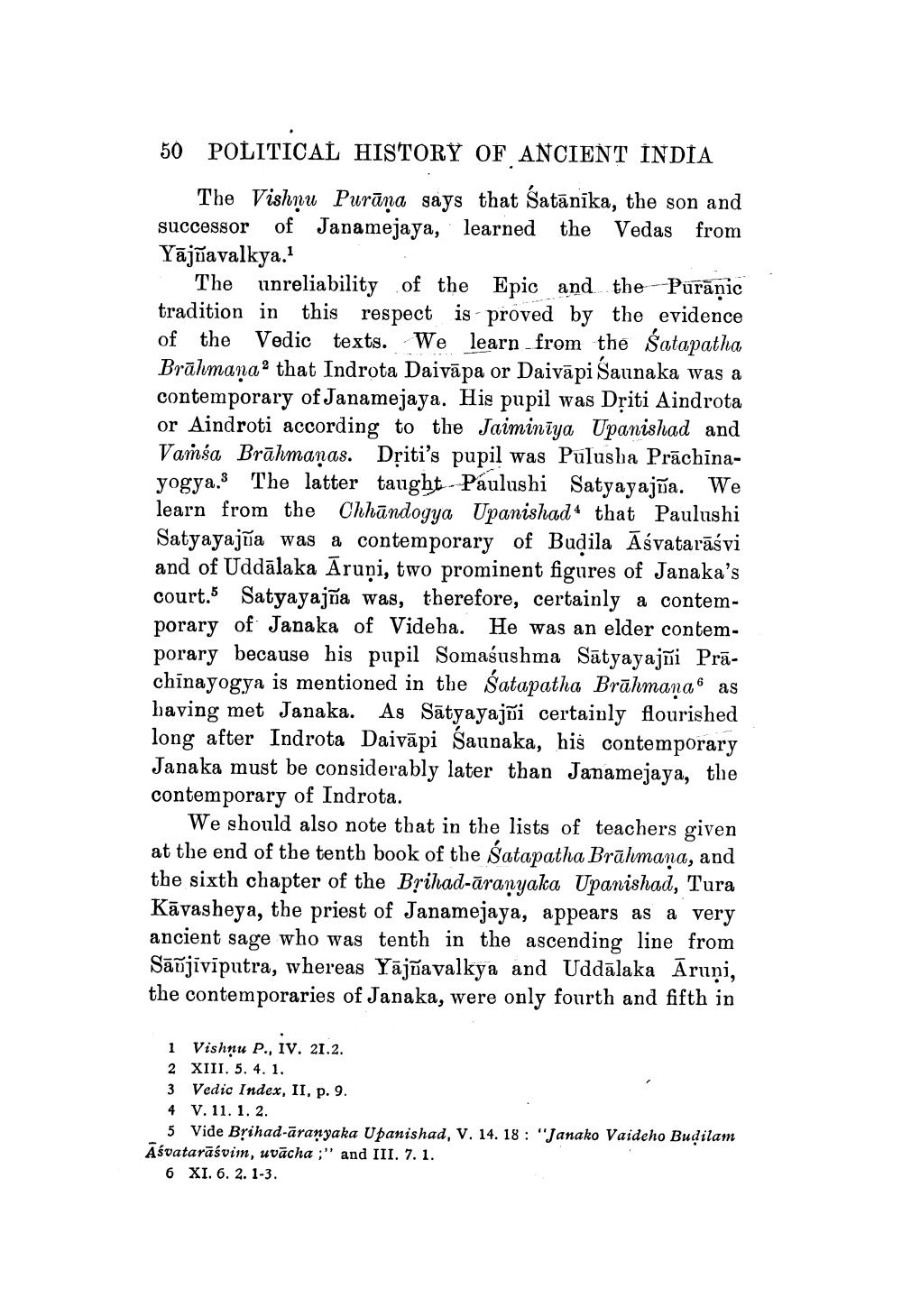________________
50 POLITICAL HISTORY OF ANCIENT INDIA
The Vishnu Purāņa says that Satānīka, the son and successor of Janamejaya, learned the Vedas from Yājñavalkya.
The unreliability of the Epic and the Pūrāņic tradition in this respect is proved by the evidence of the Vedic texts. We learn from the Satapatha Brāhmaṇao that Indrota Daivāpa or Daivāpi Saunaka was a contemporary of Janamejaya. His pupil was Dșiti Aindrota or Aindroti according to the Jaiminīya Upanishad and Vamsa Brāhmaṇas. Dșiti's pupil was Pulusha Prāchinayogya. The latter taught - Paulushi Satyayajña. We learn from the Chhāndogya Upanishad* that Paulushi Satyayajña was a contemporary of Buļila Āśvatarāśvi and of Uddālaka Ārupi, two prominent figures of Janaka's court.5 Satyayajña was, therefore, certainly a contemporary of Janaka of Videha. He was an elder contemporary because his pupil Somasushma Sātyayajñi Prāchinayogya is mentioned in the Satapatha Brāhmana6 as having met Janaka. As Sātyayajõi certainly flourished long after Indrota Daivāpi Saunaka, his contemporary Janaka must be considerably later than Janamejaya, the contemporary of Indrota.
We should also note that in the lists of teachers given at the end of the tenth book of the Satapatha Brāhmaṇa, and the sixth chapter of the Brihad-āranyaka Upanishad, Tura Kāvasheya, the priest of Janamejaya, appears as a very ancient sage who was tenth in the ascending line from Sāñjiviputra, whereas Mājsavalkya and Uddālaka Āruņi, the contemporaries of Janaka, were only fourth and fifth in
1 Vishnu P., IV. 21.2. 2 XIII. 5. 4. 1. 3 Vedic Index, II, p. 9. 4 V. 11. 1. 2.
5 Vide Brihad-āranyaka Upanishad, V. 14. 18 : "Janako Vaideho Budilam Āśvatarāśvim, uvācha ;" and III. 7. 1.
6 XI. 6. 2. 1-3.




